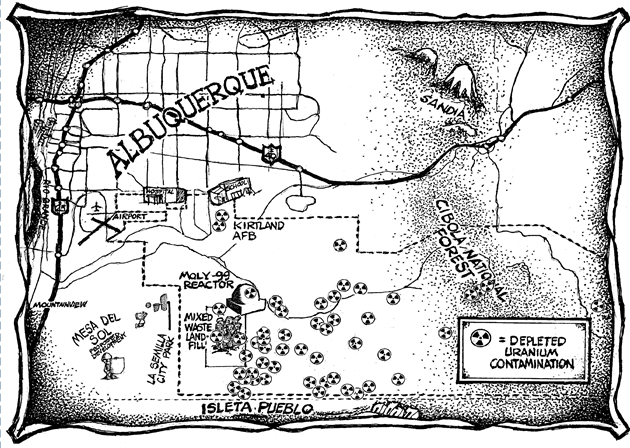
Columbia Riverkeeper
Files
Download Full Text (7.8 MB)
Document Type
Report
Date
2-2006
Description
This report was written to give the American public an in-depth comparison of the U.S. Department of Energy’s (DOE) policy entitled Risk-Based End States (RBES, from Order 5400.1 “Use of Risk-based End States,” issued July 15, 2003) and the individual end-state site reports for three of the nation’s most polluted nuclear-waste sites:
Idaho National Engineering Laboratory (INEL) in Arco, Idaho
Oak Ridge National Laboratory (ORNL) in Oak Ridge, Tennessee
Savannah River Site (SRS) in Aiken, South Carolina
Note: In 2005, INEL embargoed its RBES report because of “stakeholder concerns,” meaning stakeholders were suspicious of the motives of DOE and its RBES policy, which outlines a strategy for less clean-up of the nation’s most polluted and dangerous sites.
DOE has recently adopted an approach to our nation’s dangerous legacy of nuclear waste that has been perfected over the last century by the world’s most human-rights- and environment- abusive corporate businesses—rather than take responsibility for its contaminants, DOE is pursuing a course of circumvention and denial. It is imperative for those reading this report to under- stand why REBS is important to the department and how the policy might allow it to do less cleanup than existing compliance agreements demand.
During the last seventeen years, the author has been extensively involved in nuclear waste cleanup risk-assessment and was the chair of the Columbia River Comprehensive Impact Assessment Team (CRCIA). The CRCIA team purpose was to create a guidance document that could be used as a blueprint for a comprehensive, cumulative impact assessment. In the fall of 1997 the “Requirements for a Columbia River Comprehensive Impact Assessment” document was released. The CRCIA Requirements document was peer-reviewed by DOE’s selected experts and given strong support. In 1998 DOE committed to using the requirements document as a tem- plate for all assessments. As of January 2006, DOE has not used the document as a template in- stead has used certain requirements while discarding the rest.
This research was completed money allocated during Round 6 of the Citizens’ Monitoring and Technical Assessment Fund (MTA Fund). Clark University was named conservator of these works.
If you have any questions or concerns please contact us at digitalrepository@clarku.edu
Publisher
Columbia Riverkeeper
Format
Keywords
nuclear weapons, nuclear weapons testing, environment, non-governmental organizations, United States Department of Energy, tribal governments, environmental cleanup, radioactive fallout, radioactive waste
Rights
Copyright belongs to the authors. Clark University was chosen by the non-profit peace and environmental groups as the conservator of these reports; our right to distribute these works ensures they remain available to the public in perpetuity as intended. Reuse at your own discretion with with due deference to copyright holders.
Location
Bingen, WA
Recommended Citation
deBruler, Greg, "DOE Goes Corporate With Risk-Based End States: DOE’s Strategy for Diminished Cleanup of Our Nation’s Nuclear Waste Sites" (2006). Columbia Riverkeeper. 3.
https://commons.clarku.edu/riverkeeper/3



